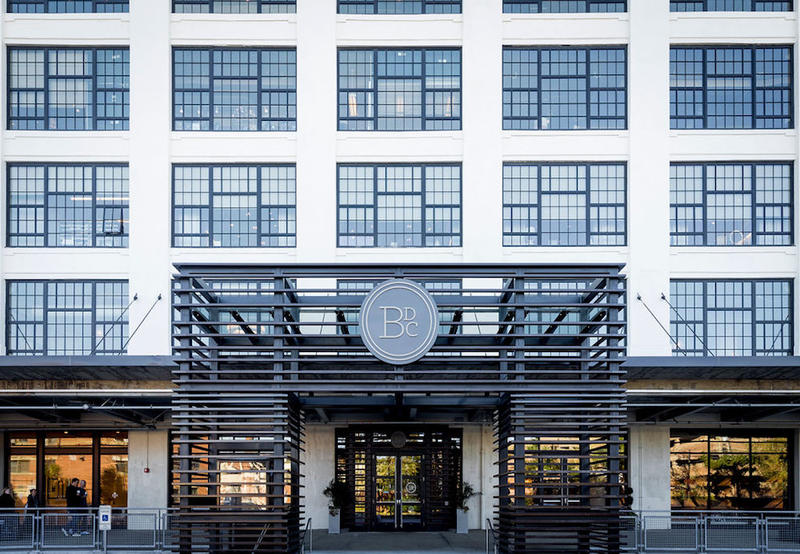With a portfolio that leans more urban community than trade-only, real estate investor Jamestown has taken a retail-driven approach to the traditional design center. Last month, the Atlanta-headquartered management company officially debuted its renovation of Boston’s Innovation and Design Building (IDB), which houses the Boston Design Center and the creative offices of companies like Reebok, Stanley Black & Decker and Autodesk. As design centers look for new ways to remain relevant in the digital age, the firm’s hybrid model may provide some solace.

“We’re fundamentally a retail-focused company, so the idea that you enhance the customer experience—that you provide display and customer engagement and amenities for the experience—informed our thoughts about [the renovation],” says Michael Phillips, principal and president of Jamestown, parent company of urban communities like Chelsea Market in New York, Ghirardelli Square in San Francisco and Ponce City Market in Atlanta.
For IDB, located in the Seaport District of Boston, experiential amenities translate to new dining options, including Flour Bakery and Café and promenade staple Gelato and Chill, as well as full-service restaurant Chickadee. A relocated building entrance and design center lobby—an effort to cohesively connect the Boston Design Center with the technology, marketing and design firms in the building’s other half—are among the other notable changes on the IDB’s new architectural blueprint.
Access to the entry has changed as well. “Much like other design centers have done, we removed the barrier to entry at the front of the building and created interactivity between the designers, the clients and the consumer,” Phillips tells Business of Home. The policy allows each showroom to determine its willingness to transact with a consumer directly, to connect them with a designer, or to only work with designers and trade purchasers.

Since implementing the showroom-determined access policy in 2016, the reviews from tenants have been mixed, Phillips says. While consumers are drawn to transactional items, such as antiques and accent pillows, the purchases don’t put a dent in the revenue coming from custom items sourced by the trade.
“The bulk of the business is still fabric, upholstery and long-lead items, so the majority of that transactional volume will be with contract and trade purchasers,” says Phillips. “But as a trend in the U.S., we’re seeing access to high-quality design much more democratized than it was in the past. The gap between the contract product and the retail product is shrinking in some cases, and we’re seeing also collaborations in the online and catalog companies as well. Even great designers are finishing the last 5 percent of their designs with things they can get quick-shipped online. Coming up with a hybridization in that regard is a forward-looking direction.”
Also within sight for IDB is a mobile app featuring updates on the building’s transportation and dining options, as well as an amenity component for connecting consumers with the service providers in the center, from caterers and a printing company to contractors and interior designers. The app, which Phillips hopes will help drive traffic to the IDB, is currently being tested.
The new developments reflect Jamestown’s retail-inspired plan for enhancing the consumer experience—as Phillips puts it, the key to evolving the traditional design center model. “I think you’re going to see more individual showrooms, as the need for a greater service and product knowledge is challenging the multi-line model, and more of an open architecture in regard to our trade model,” he says of the future of design centers. “But I think you’re always going to see design centers as a focal point, because concentration of a shopping experience is an enjoyable way to shop for home furnishings—to see variety and get the most access—and so it’s incumbent on design centers to provide a much more interactive environment for their communities.”




























